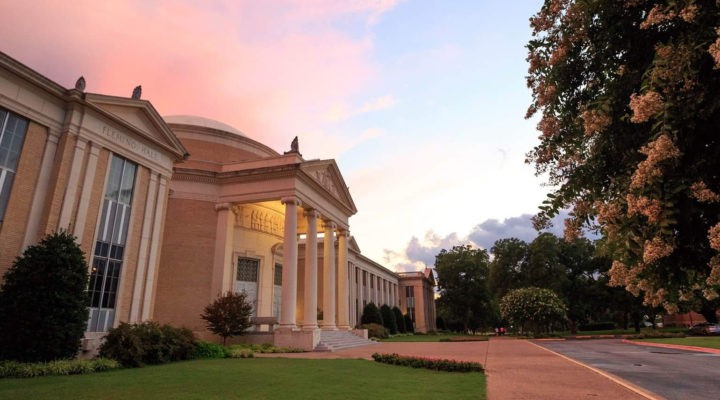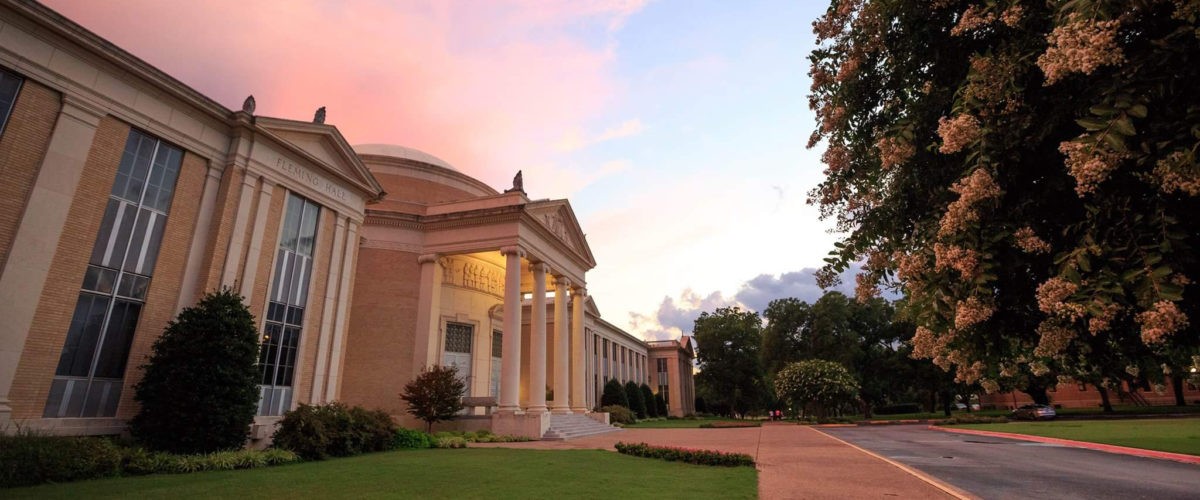The layers of historical dysfunction in the financial management of Southwestern Baptist Theological Seminary continue to be peeled back as current trustees and administrators have pledged more transparency — as evidenced by the release of 21 years of audited financial statements, something no other Southern Baptist Convention entity has done.
Yet even that is not enough for some critics — internal and external — of the seminary who believe a forensic audit is needed.
Religion News Service reported Aug. 4 that one of the seminary trustees most critical of the financial situation — who recently was censured by the board — has resigned from the board and still is calling for a forensic audit.
At the same time, Baptist News Global has come into possession of a series of internal documents that show this tug-of-war between administration, trustees and outside financial advisers well predates the current crisis and has to do with the way SBC trustees are appointed.
Unlike most colleges and universities that elect board members with specific expertise in business or education or law to serve as trustees, in the SBC institutional trustee positions often are doled out as political favors to pastors and lay leaders regardless of their expertise. There are no minimal educational requirements, for example, for someone to serve as a seminary trustee.
Historical irony

Dorothy and Paige Patterson
For evidence of how that plays out, consider this twist of historical irony: The current chancellor of the seminary, O.S. Hawkins, while serving as president of the SBC’s GuideStone Financial Resources in 2009 fired the seminary’s Foundation board as a client. The reason: Those trustees were too difficult to work with and were uneducated about long-term investment strategies.
In a letter dated Feb. 20, 2009, Hawkins wrote to Southwestern Seminary President Paige Patterson: “GuideStone Capital Management has resigned from the investment advisory relationship with Southwestern Seminary’s Foundation as of Friday, February 6, 2009. … Simply put, the working relationship had become intolerable and in many respects insoluble in a go-forward manner.”
Hawkins continued: “From our perspective, some of the members of your committee increasingly acted in a hostile, unprofessional, condescending and disrespectful way toward our people. … From our perspective, your committee has become in some ways dysfunctional. They exhibit a lack of understanding related to GuideStone’s investment platform and the value of our manager of managers approach. In short, there is a huge philosophical difference related to investment management between the seminary Foundation board and GuideStone.”
“Our people have never been treated nor talked to in such an unprofessional manner as certain members of your board have spoken to members of our staff.”
Further: “The board has little experience in asset management or endowment fund management and thus in our opinion has disregarded conventional endowment fund management concepts. … Our people have never been treated nor talked to in such an unprofessional manner as certain members of your board have spoken to members of our staff. Sadly, the relationship has become unworkable.”
Amid a bear market
Southwestern’s Foundation board was forced to take its assets invested with GuideStone and move them to a new investment manager amid one of the worst bear markets in modern history.
The two-month period from Jan. 1 to Feb. 27, 2009, represented the worst start to a year in the history of the S&P 500 with a drop in value of 18.62%. By March 2, the Dow Jones Industrial Average Index had dropped more than 50% from its October 2007 peak — a drop compared to the Great Depression.
Within two weeks of Hawkins’ letter to Patterson, the Dow had a percentage decline exceeding the pace of the market’s fall during the Great Depression. However, by March 10 that year, a market rally began and over the next two months stocks grew more than 150%.
Clearly, this context was part of the contention between Southwestern’s board and GuideStone’s advisers.
Patterson wrote Hawkins in reply to lament: “As if it is not difficult enough to salvage a seminary for the Baptist cause in the midst of the taffy pull of Calvinists, Emergents and a host of others on Southern Baptist life, I have to see, at cross purposes, the entity that I have, as you know, vigorously supported from the day of your arrival at its headship and the entity that I now attempt to lead. But, of course, that is life, and it is also invariably the way the devil works.”
“First, I was forced to make decisions on the matters I know the least about.”
Patterson acknowledged he had to rely on the guidance of his board members.
“Apparently, you are a whole lot more conversant with matters of monetary investments and marketing than I could ever hope to be,” he wrote. “The scenario in which the seminary finds itself is undeniably, in my opinion, the worst one for this particular president. First, I was forced to make decisions on the matters I know the least about. I am fairly conversant with theology, preaching, curricula and otherwise to train a generation of preachers and missionaries. I know, however, virtually nothing about money and frankly despise it and all associated with it. In addition to that, the safety net of endowment that was supposed to protect a school like this in times of financial difficulty has, in fact, proven to be a Mount Everest-sized problem.”
Just two years earlier, in 2007, Southwestern had moved its investments from the Baptist Foundation of Texas — now known as HighGround Advisors — to GuideStone. HighGround has been among the most reputable and successful managers of church-related institutional funds in the nation. HighGround manages assets for a host of Baptist entities, including many universities. (HighGround also manages assets of the ABP Foundation, which helps to fund Baptist News Global.)
“I spent most of my clout in getting the money removed from the Baptist Foundation of Texas and getting a substantial percentage of it placed with GuideStone,” Patterson told Hawkins. “I think (trustees) believe the first move to have been a good one, but they do apparently have their concerns about the second, and I was unfortunately not capable of presenting a convincing case to the contrary. I still feel I must follow their advice because I do not have their expertise. The uncertainty of the whole financial debacle makes me believe more and more that nobody really has the answer to it. Unfortunately, at this point my eschatology becomes pretty focused and none of it surprises me.”
According to Southwestern’s audited financial statements, the seminary lost more than $18 million (20%) in endowment value in 2009, compared to 2008.
Where did the cash come from?
One question that has not been answered by Southwestern’s current leadership is how the Fort Worth, Texas, school floated the $140.1 million cumulative operating deficit it recorded from 2002 to 2022.
Where did the cash come from to fund year after year of deficit spending?
Often, nonprofits — sometimes to their peril — borrow from their own assets to fund current operations. Those assets may include (legally) unrestricted investments and (illegally) designated gifts held as investments.
Additional documentation provided to BNG shows this very question was of paramount importance to the seminary in 2018, when trustees hired an outside firm to review whether any violations had occurred in spending designated funds for purposes other than those designated. That review found that, despite alarms raised by an internal audit committee, the only problem was institutional advancement staff recording descriptions of desired uses of gifts that were not technically designations for those gifts.
Aaron Sligar
With this and more as background, a West Virginia pastor who was elected by the SBC to serve on Southwestern’s board became alarmed about a history of financial practices that continued from Patterson’s tenure into the administration of his successor, Adam Greenway. Greenway was forced out of the presidency last fall, and trustees have released scathing reports of his use of funds.
That now-retired pastor, Aaron Sligar, gave an interview to Bob Smietana of RNS last week.

Aaron Sligar
After being censured and targeted for investigation by the rest of the board this spring, Sligar resigned as a trustee in June, RNS reported.
That story says: “Sligar … said that Greenway deserves some blame, but not all of it. A former investigator for the Federal Bureau of Prisons, the pastor said that in allowing Greenway to resign the trustees shirked their own accountability. If Greenway was solely to blame, he asked, ‘Why didn’t we fire him?’ As he learned more about the school’s finances, Sligar asked for a forensic audit, a common practice during his time at the federal prison bureau. ‘It’s hard to reset and go forward financially if you don’t know where the money has been spent,’ he said.”
Sligar told RNS he got “volumes” of receipts for Greenway’s spending but was cut off when he asked about spending of other seminary leaders. “To be honest, they gave me what they wanted me to have.”
Trustee officers have portrayed Sligar as a lone ranger who inserted himself into the investigation and caused alarm among the board without justification.
Whether that’s true or not, the seminary’s financial management and declining enrollment are currently the subject of a review by the Southern Association of Colleges and Schools Commission on Colleges, which has said Southwestern has not complied with the accrediting agency’s rule for board governance.
Related articles:
Confirmed: Greenway out at Southwestern Seminary
Behind the numbers: How Southwestern Seminary’s enrollment came to be the lowest it has been since World War II | Analysis by Mark Wingfield
What happened at Southwestern and why does it matter? | Analysis by Mark Wingfield
Why we must be cautious about understanding what’s going on at Southwestern Seminary | Opinion by Mark Wingfield
Here’s how to force SBC entities to be accountable to people in the pew about their finances
Eight months later, there still aren’t many public details on the financial and enrollment problems that led to Greenway’s departure from Southwestern | Analysis by Mark Wingfield


